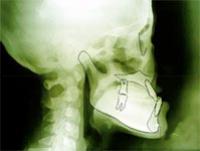Jaws that don’t fit together properly are not only a medical problem, but an esthetic problem. In addition to causing difficulty in biting and chewing, these “bad bites” may make people self-conscious about their smile and their overall appearance. There are many types of bad bites, with some having a greater effect on facial esthetics than others. Some of the more common types can be seen below.
- Recessive lower jaw relationship to upper jaw
- Protruding lower jaw relationship to upper jaw
- Open bite relationship, where teeth do not meet
- Asymmetry, Where the jaw is "off" to one side or another
- Combinations of the above
The good news is that they need not be permanent as improvement, and often correction, can be attained with the proper procedure. An oral and maxillofacial surgeon changes facial features by performing surgery on the underlying bone structure. This may be accomplished by rearranging the jaw bones or adding some form of plastic material or implants to the jaw bones to enhance a particular feature, such as the cheekbones or chin. The oral and maxillofacial surgeon may also perform other types of facial surgery such as rhinoplasty (nasal reshaping), blepharoplasty (remove of fat and tissue from baggy eyelids), rhytidectomy (facelift), liposculpture (selected fat removal), chemical peel, laser resurfacing and scar revision.
There are many other types of specialists whose services include changing facial features. Depending on your problem, you may need only one doctor, or several specialists may work together as a team provides you with the best results.
Orthodontist work with individual teeth by applying forces that place them in proper position in the jaw bones. They also align teeth so that they are in a correct relationship with one another. Orthodontists are commonly associated with the placement of braces but they do practice a wide range of techniques.
An orthognathic ("ortho" means straight and "gnathos" means jaw) surgeon can help when a person has an upper (maxilla) or lower (mandible) jaw that is too big, small, forward or back. More often than not, the only solution is to perform surgery that corrects these skeletal defects. When planning an orthognathic surgical case, the general dentist, orthodontist and oral surgeon will work closely with one another to set the stage for optimum post surgical results in regards to both function and esthetics.









 Dental Implants
Dental Implants



